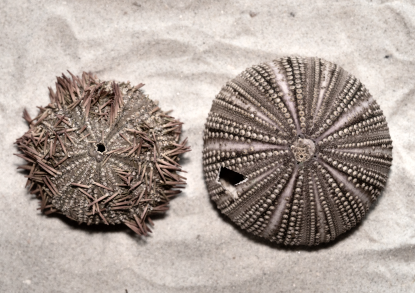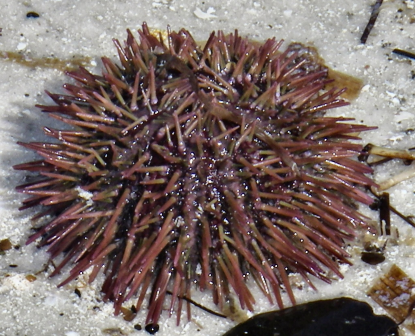

Lytechinus variegatus
The Short-Spined Sea Urchin has a symmetrical, slightly flattened test (skeleton) composed of calcium carbonate. The test, which can be up to 4½ inches across, is covered with blunt, short tubular spines. These spines readily detach after death.
This sea urchin has an “Aristotle’s lantern” surrounding its mouth located on its bottom surface. This structure has five teeth used for rasping food from surfaces. It feeds on sea grass. In addition, it also collects floating debris with its tube feet for added nourishment.
Sea urchins may cover themselves with shells and small rock fragments. It is believed that this behavior is to shield themselves from light or ultraviolet radiation and or to provide stability is turbulent water.
Sea urchins reproduce by spawning. Eggs and sperm are ejected into the water, allowing the eggs to be fertilized. Larvae develop through several stages. Then through metamorphosis (abrupt change in body structure) become juvenile urchins.
Live shells should never be taken from any Florida State Park.